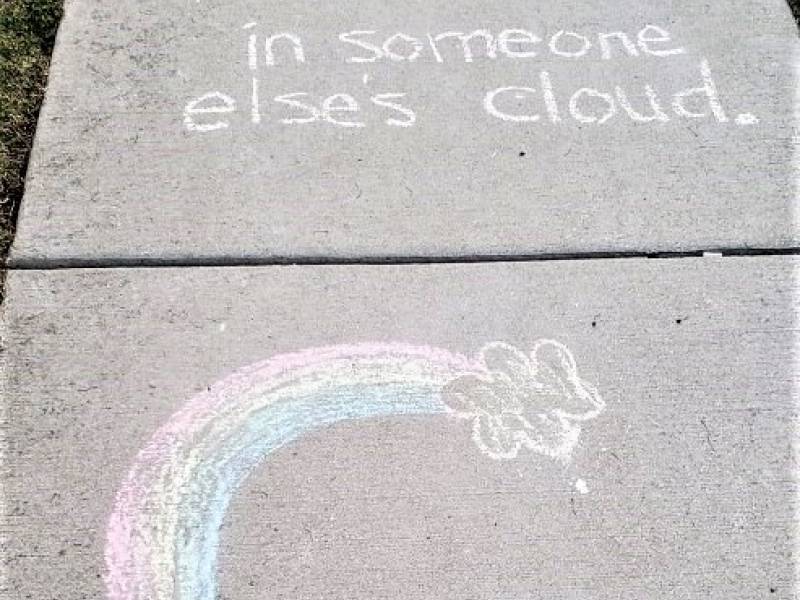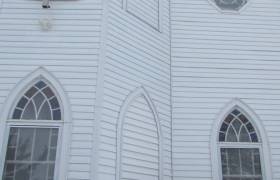Explore the outdoors while paddling down ...
Museums Making History: Rapid Response Collecting
So many of us, myself included at times, think of history as something in the past, not something happening in the midst of our daily lives. The COVID-19 pandemic is changing that perception.
Each of us living through this pandemic is making history simply by adapting to these crazy times. As the weeks of quarantine/lockdown/shelter in place roll on, more and more museums are taking an opportunity to record these historic circumstances as they happen, rather than hoping someone saved something years down the road. The museum world often calls this collection strategy “rapid response collecting.”
It ís a great way to ensure that the institution has the materials to be able to tell an event’s story later on.
This strategy doesn’t apply just to pandemic-level situations, nor is it a new concept. In fact, many museums have been collecting present-day items for years, but the Victoria and Albert Museum (V&A) in London is generally regarded as the leader in this concept. In 2014 the V&A implemented rapid response collecting as an intentional, ongoing collecting strategy. It also opened a gallery space where these new objects can be displayed shortly after entering the museum. The National Museum of African American History and Culture, the New York Historical Society, and the Orange County Regional History Center in Orlando are some institutions in the United States that have been adopting rapid response collecting policies in order to preserve artifacts from social movements.
Caution tape on a playground is never good, but this time it’s because of COVID-19. I’ve seen small groups of people playing there throughout the shelter in place order, but then on April 10, I noticed that my town had finally closed the park.
The coronavirus upheaval has encouraged even more museums to address and record the situation as it unfolds. Long-time practitioners and institutions relatively new to rapid response collecting have all been asking people in the communities they serve to share their experiences with museums.
The museum where I work, Naper Settlement, has asked staff members and the public to contribute their photos, journals, and other items recording their experiences during the pandemic. The McHenry County Historical Society posted a fillable questionnaire on its website inviting residents to share their stories and photos.
Elsewhere in the U.S., the president and CEO of the Maryland Historical Society asked Maryland residents for the same kind of documentation, as outlined in its “Collecting in Quarantine” initiative. The Museum of English Rural Life in Reading, England, a fixture in museum social media, asked for a more creative donation. They want people to design farmers’ smocks in “Animal Crossing: New Horizons,” the latest release in a popular video game series. (These smocks look like dresses, but farmers wore them to protect their clothes from the wear and tear of farm work.)
These are but a few of the many, many examples popping up all over the world of museums. When the pandemic subsides a bit and more museums return to some sort of normalcy, I bet even more institutions will be reaching out to their local communities.
The exciting part about this moment in history is that anyone can contribute to the historical record!This is an opportunity to make sure that your voice is heard and in doing so,your experiences help define how future historians interpret the COVID-19 pandemic. If you’d like to help museums make history during the COVID-19 pandemic, here are some ways that you can help:
• Investigate if a museum or historical society near you is collecting materials from the COVID-19 pandemic. If not, keep a record anyway. Institutions not collecting currently may ask for donations once they reopen!
• Keep a journal or other written record about your experiences. Write down how the pandemic has changed life for you and your family. For example, what are you doing during the shelter in place order? Even ìdoing nothingî might be important to readers 20, 50, or 100+ years from now!
• Take photos and videos of what youíre seeing and doing. Snap photos of empty parking lots, closed stores, and empty store shelves. Screenshot your next family Skype session or Zoom meeting with co-workers! While on a walk, record the little ways your community is making the isolation more bearable.
• Be thorough in your record-keeping! Write down who you are, whoís in your household, where you live, what you do for a living, etc. Pretend that the person reading or seeing what youíve documented doesnít understand you or your community, and then fill in those details. Future historians will thank you for it!
To read more of The Walking Anachronism blog, click HERE.
• Emily Dattilo, a museum educator at Naper Settlement in Naperville, is a former Collections Assistant at the McHenry County Historical Society & Museum. She also pens the history blog, The Walking Anachronism, available at https:// thewalkinganachronism. wordpress.com/author/ edattilo/.
 © 2025 MCHS- All Rights Reserved.
© 2025 MCHS- All Rights Reserved.















